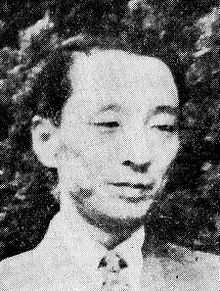Hisato Ohzawa

Hisato Ohzawa (大澤壽人 Ōzawa Hisato) (August 1, 1907—October 28, 1953) was a Japanese composer. His relative neglect today contrasts with the view that he was one of the preeminent Japanese composers of his day.
Biography
He grew up in Kobe, studying piano, organ and choral singing. He moved to the United States in 1930 to study composition at Boston University and the New England Conservatory of Music, also taking some lessons with Arnold Schoenberg. It was in America that his early works were composed: The Little Symphony, his First Piano Concerto, his First Symphony, and a Double Bass Concerto. In 1934 he moved to Paris and continued his studies, composing his Second Symphony and his Second Piano Concerto.
He returned to Japan in 1936, where his works were met with mixed reactions, being technically too difficult for Japanese orchestras of the time, and being in a fairly modern style. Due to the increasing international tension of the time, he was less and less able to travel, struggling to make a living as a composer. The Third Symphony (named "The Symphony of the Founding of Japan" and dedicated to the then-current Emperor, Hirohito) was composed in 1936, with the Third Piano Concerto following in 1938 (named "Kamikaze," after a popular civil aircraft). In 1940 he wrote two cantatas to celebrate the 2600th year of the Emperor. He also wrote musicals and film music.
After the Second World War, Ohzawa taught at the Kobe Jagakuin; composed light music, jazzy concertos for saxophone and trumpet; created an orchestra; and hosted his own radio show featuring the orchestra, which featured popular classics, as well as more modern works by such composers as Igor Stravinsky, Arnold Schoenberg and Dmitri Shostakovich. He aimed to write a Fourth Symphony, but was stopped by his death, leaving only the title page.
Works
- Sinfonietta (1932)
- Piano Concerto No. 1
- Symphony No. 1
- Double Bass Concerto - dedicated to Sergei Koussevitzky
- Piano Concerto No. 2 (1934)
- Symphony No. 2 (1934)
- Symphony No. 3 (1937)
- Piano Concerto No. 3 "Kamikaze" (1938)
- Saxophone Concerto (1947)
- Trumpet Concerto (1950)
Recordings
Naxos Records' "Japanese Classics" series released two discs of his music: one containing the spectacular Piano Concerto No. 3 and Symphony No. 3, another containing Piano Concerto No. 2 and Symphony No. 2.
External links
|